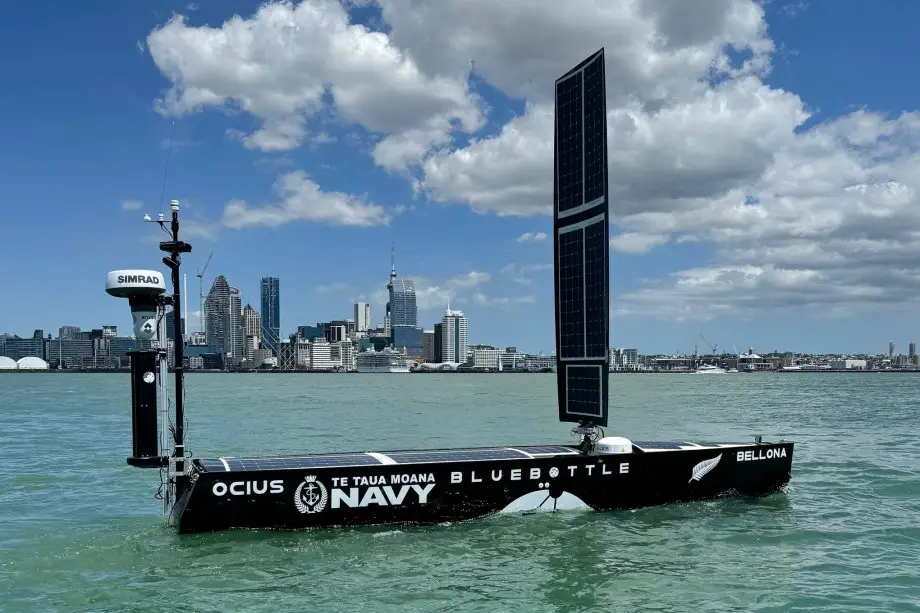Breaking news
Royal New Zealand Navy successfully tests USV Bellona in Auckland.
According to information published by the New Zealand MoD on February 13, 2024, Auckland Harbour has been selected as the site for a two-week trial of an Uncrewed Surface Vessel (USV), named Bellona, aimed at evaluating its performance and capabilities.
Follow Navy Recognition on Google News at this link
 Uncrewed Surface Vessel Bellona. (Picture source: Royal New Zealand Navy)
Uncrewed Surface Vessel Bellona. (Picture source: Royal New Zealand Navy)
This vessel, which utilizes a combination of solar, wind, and wave energy for propulsion, is part of a broader initiative to explore sustainable marine operations. Designed and manufactured by Sydney-based Ocius Technology, the company behind the vessel has a history of supplying USVs to the Australian Defence Force and collaborating with the Australian Border Force and various scientific agencies.
Bellona, stretching 6.8 metres in length, is named after a Royal New Zealand Navy (RNZN) post-war cruiser and showcases the potential for extended maritime missions without traditional fuel sources.
Its propulsion system includes a retractable rigid sail for wind energy, photo-electric cells for solar power, and a unique flipper and rudder mechanism that allows movement in the absence of wind or sunlight.
Capable of reaching speeds of up to five knots, the Bluebottle, as it's also known, can operate indefinitely at sea, handling sea states up to 7 with wave heights between six to nine metres.
The trial phase sees Bellona navigating Auckland Harbour by day, escorted by Navy personnel in a Rigid Hull Inflatable Boat (RHIB), before advancing to overnight operations in the Hauraki Gulf.
Operations are closely monitored from a control room at the Devonport Naval Base, with communication maintained through mobile signals near shore and satellite connections when offshore.
Equipped with advanced navigation aids, an Automatic Identification System (AIS), and a suite of sensors—including radar, electro-optic, and infra-red cameras—Bellona ensures safe autonomous navigation and the ability to identify other vessels.
This technology exemplifies the growing role of USVs in supporting government functions such as fishery protection, border security, and environmental monitoring, pushing the envelope in the integration of renewable energy with maritime capabilities.























